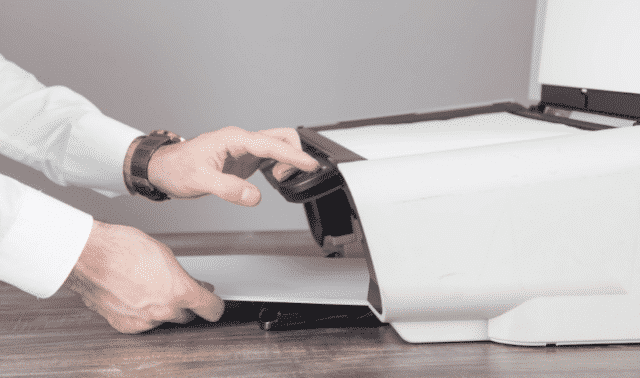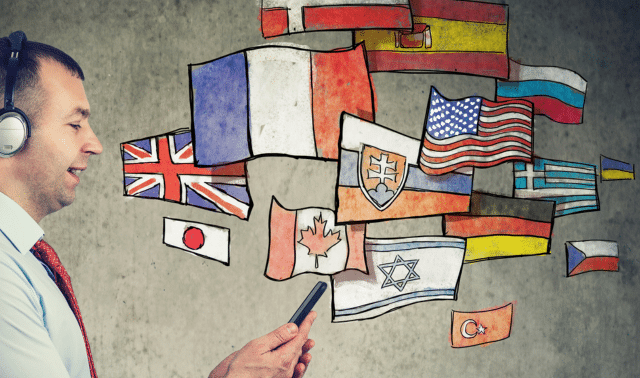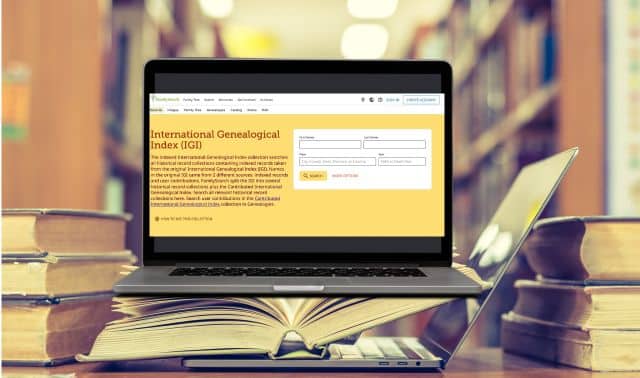Sign up for the Family Tree Newsletter! Plus, you’ll receive our 10 Essential Genealogy Research Forms PDF as a special thank you.
Get Your Free Genealogy Forms
"*" indicates required fields
As a genealogist, you probably accumulate a lot of papers—correspondence, charts, notes and photocopied records. Then add on the receipts, financial records, newspaper clippings, business cards and other documents that pile up when you’re pursuing other interests. To control the clutter and keep everything organized, you could buy another filing cabinet—or consider an alternate solution: a document scanner.
Traditional, flatbed scanners usually handle only one page at a time, and are good for photos and fragile documents. A document scanner, though, has an automatic document feeder (ADF) so you can quickly scan multiple pages. Insert a stack of papers and in a flash, they’re converted into a file on your computer.
For years, Fujitsu reigned as Amazon.com’s No. 1-selling document scanner brand. Since 2023, Ricoh acquired the scanning business and is in the process of rebranding the products. Look for either brand names, or the model name SnapScan. Subsequent releases include the iX1400 and iX1600. Built like a tank, such a document scanner takes up less surface area than a laptop (11.5×6.3×6 inches on your desk, with the ADF chute closed). The ADF holds 50 pages, and scans 20 double-sided pages per minute, in color. The scanner, compatible with Mac or PC, features wireless connectivity and a touch screen interface. Apparently you get what you pay for: The lofty price (around $400 on Amazon.com) hasn’t deterred legions of devotees.
So is a document scanner the best solution to rescue you from mountains of messy paperwork? Here are four reasons to consider a document scanner for your genealogy:
1. Save Space
Using a document scanner has made a sizeable dent in my paper files, allowing me to reclaim some office space. But it’s still not a cure-all. Even with a fast scanner, digitizing a lot of papers takes a long time. First you have to take papers out of envelopes and remove staples and paper clips. Then you have to save the scanned file with an appropriate name so you can organize your scans by topic.
So even though my scanner blazes through 20 pages per minute, I actually scan only about 2.5 pages per minute, or 150 pages an hour, on average. At that rate, it would take me almost 15 hours to scan the 2,200 pages in a 12- by 15-inch banker box, and 120 hours to scan the 18,000 pages in a four-drawer filing cabinet. You might decide that some papers really aren’t worth scanning after all.
2. Easily Share Documents
As PDFs, the 9,460 pages I’ve scanned take up only 1.64GB of hard disk space. I can easily email them, copy them to a flash drive, upload to an online family tree, or put them elsewhere online.
3. Back Up and Organize Files
Like my paper genealogy files, I arrange my scanned files within surname folders. But within those folders, I organize the files by place—something that wasn’t really practical with my paper files. Most document scanners come with basic software to view and edit PDF and JPG files on your computer; you’ll want something like Adobe Acrobat Standard for advanced editing and to organize PDF files. Look for a scanner that supports scanning directly to Evernote, Dropbox, Google Drive or SugarSync, making for easy backup and safekeeping.
4. Make Documents Searchable
PDF files created from typed or typeset documents, and even documents with handwritten text, successfully convert to searchable files. Now I can search for a word or a string of text in the genealogy correspondence calendars I kept on paper back before I owned a computer. You also can save JPG files to Evernote, which performs text recognition on typed and handwritten characters.
Let’s be honest—a document scanner won’t solve your paper problem overnight. But it can help you clear away some of the clutter and get organized.
Related Reads
A version of this article appeared in the July/August 2013 issue of Family Tree Magazine. Last updated: December 2024








